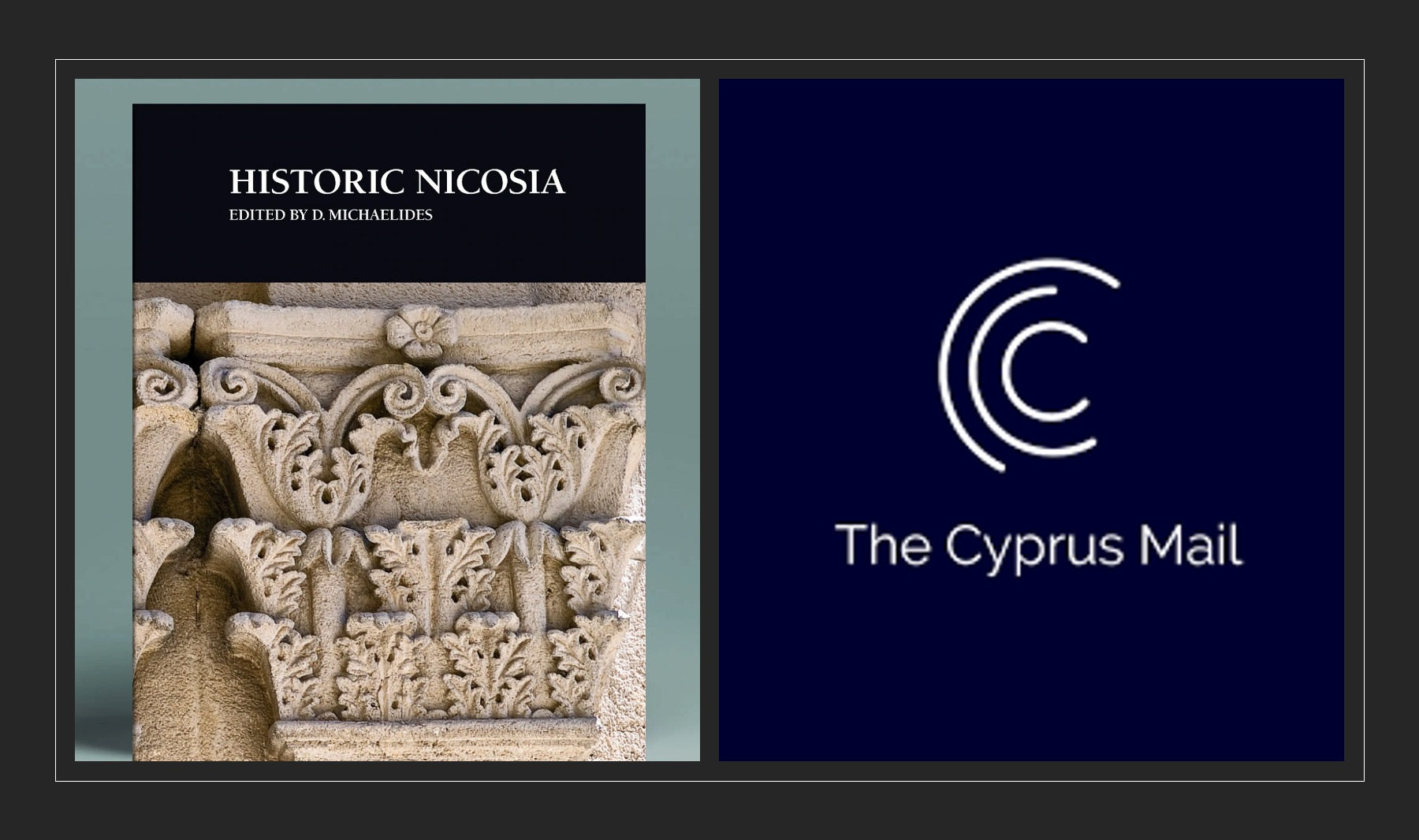
CYPRUS MAIL
Nicosia Down the Ages
DEMETRIOS Michaelides was a child with a rather offbeat passion. Like most kids, he loved a good bit of adventure, but his was of an unusual kind, spending whole mornings and afternoons armed with a worn copy of Rupert Gunnis' Historic Cyprus, as he explored every nook and cranny within the maze of winding streets in the old capital.
Fascinated by the walled city of Nicosia, he found much to capture his imagination from its intricate medieval monuments and churches, to the colourful markets and streets housing the likes of cobblers and goldsmiths.
Years later, the now professor at the Department of History and Archaeology at the University of Cyprus has paid tribute to his childhood passion with a glossy new English publication going by the name of Historic Nicosia.
Historic Cyprus, the book which inspired him, was written by a British colonial official and first published in 1936. It still exercises a strong hold over him.
"I don't think I would have embarked on such a venture if it had not been for this book (Historic Cyprus), and it is in tribute to this author that I decided to call the present volume Historic Nicosia," he explains in the preface of the publication he has spent years editing and compiling.
Historic Nicosia, which is written in English, now stands as the first comprehensive and scholarly history of the capital, dating back to its earliest development until the island's independence in 1960. Leading historians and academics guide the reader through all the major epochs, drawing on classic sources as well as the latest scholarship emanating from the study of ancient documents and archaeological discoveries.
Each chapter contains a mix of photographs, maps and illustrations, some of which have been published for the very first time.
"I really enjoyed discovering new facets of Nicosia's history but also hunting through archives and old publications where I found unusual illustrations for all the chapters," says Demetrios who is also the vice-president of the Historical Society of Cyprus and president of the International Committee for the Conservation of Mosaics.
"We now have a much fuller picture of Nicosia than I had ever anticipated."
The idea for the book first came about in 1999 when former Nicosia mayor, Lelos Demetriades, asked Demetrios whether he would undertake to coordinate a book on Nicosia.
"I was eager to seize the opportunity. It was clear to me that a ‘history' of Nicosia was what was envisaged, but I decided right from the start that this was not going to be a straight historical account of events," he explains. "Rather, I wanted to attempt to recreate, as much as possible, the physical aspect, the topography, the buildings and the social make up of a space at different times in history and to weave these into the historical events that shaped it into modern Nicosia."
Once the research began, the professor realised that there was no work so far available which gave an all rounded approach to the history of the capital in an indepth and extended fashion. While popular works have emerged in recent times, Demetrios points out a tendency to either focus on a more sketchy approach as part of a general Cyprus overview, or place emphasis on a given period, particularly the late Ottoman and early British rule, for which there is much photographic documentation.
In an attempt to put together something different, he brought a whole team of professionals on board to help compile the various chapters which begin by looking at the very first settlements that eventually formed the nucleus of the city of Ledroi from which Nicosia evolved.
This is followed by chapters on Byzantine Nicosia, Frankish and Venetian Nicosia, the Ottoman Rule and British rule. The final result is a series of independent chapters, the authors of which were allowed to follow their own approach using their personal style of narrative.
Some are filled with all sorts of interesting facts on all the fantastic architecture which characterises the area, others pay tribute to archeological finds and relics. The section which deals with the British rule in Cyprus is particularly well illustrated with pictures taken at the time, boasting clear depictions of the town's residents, the centre with its various shops and stalls, and the colonial town houses.
Most noteworthy is the inclusion of the results of recent excavations and new research. There is also a full list of governors, archbishops, dragomans and mayors included in a comprehensive fashion. Flick through the pages and you'll even find topographical maps of Nicosia.
But not everything is quite as detailed as it should be, with the research revealing certain unfortunate loopholes, especially regarding Nicosia during antiquity and early Christian times. Attention is placed on the fact that very little is being done by the authorities to investigate the ancient strata of Nicosia revealed by recent rescue excavations, notably in the area of the old municipality and PASYDY Hill. While they are of crucial importance to the history of the city, Demetrios is disheartened by the fact that much is being left unaccounted for in the dug up land.
"Excavating some parts of a given plot or only going down to a given depth gives an incomplete and erroneous picture of the evidence," he insists.
He is also opposed to all the new buildings sprouting up that are beginning to overcrowd the old centre.
"When Nicosia as a whole is choking in traffic, lack of adequate parking space, and difficulties caused by the unnatural division of the city, we've began to squeeze new buildings into the old core of the city, spoiling its character and damaging its history, and sowing the seeds for more evils to come," says the professor. "All these projects will draw even more people into the already overcrowded centre."
Demetrios' passion for the old town still remains as strong as ever, but in contrast to his days spent wondering the winding lanes of the old town as young boy, he now has to hope that this magnificent hub of cultural and historical heritage remains protected from the sprawling backdrop of urbanisation.
by Zoe Christodoulides
_______________________________
Historic Nicosia has been published by Rimal Publications and is available at the Moufflon and Soloneon Bookshops in Nicosia. Contributors include Demetrios Michaelides, Despina Pilides, Tassos Papacostas, Nicholas Coureas, Gilles Grivaud, Chris Schabel, Ioannis Theocharides, Dr Theocharis Stavrides, Euphrosyne Rizopoulou-Egoumenidou and Diana Markides.
It can also be purchased online at www.rimalbooks.com, or by sending an email to order@rimalbooks.com.
Delivery within Cyprus is free of charge.


